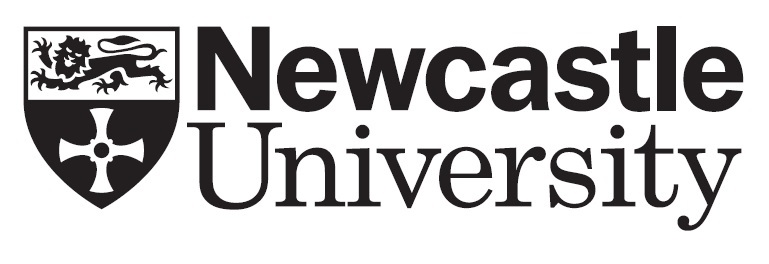Craft and War
Jennifer Way, University of North Texas
This session investigates relationships of craft and war and considers how they compel a reappraisal of central themes in craft history. We may not readily identify craft as a cultural form long associated with war. Nevertheless, since its emergence during the 19th century as a hand-based fabrication valued especially for its differences from machine-made goods, craft has been involved with civil and foreign wars, cold wars, and police and military actions.
Together, papers in this session revisit craft’s involvements with wars spanning nearly 130 years, with attention to craft and the British military in India beginning c.1830, Belgium during the First World War, Latvia during the interwar years of the 1920s and 1930s, Poland and the US and Britain during the Second World War, and Central-East Europe in the Cold War. In delving into particular examples, the papers inquire as to what we know about who made craft and how these makers engaged craft with commemorating war achievements, providing humanitarianism and propaganda, bearing witness to disruption and dislocation, indexing trauma, facilitating self-making and survival, rehabilitating, and networking for solidarity and peace.
Throughout, the papers intersect historical situations with theoretical frameworks and interdisciplinary approaches to illuminate how and for whom craft has mattered in its connections to the politics of wars and to wars’ subjectivities and affects. They revisit craft on home fronts and in battlefields, internment camps, sites of recovery, diasporas and places of memorialisation. At issue as well is what new narratives for craft histories might this attention to craft and war propose.
Speakers
Keepsakes of Conflict: A productive duality
Julia Krueger (University of Western Ontario, London, Ontario, Canada)
Heather Smith (Independent Curator)
Holding onto the Thread: Latvian folk costume in post-war displaced communities
Alida Jekabson (Museum of Arts and Design, New York)
Crafting Resistance in and after Auschwitz: The case of Lisa Pinhas
Anne Röhl (University of Zurich)
‘To Exercise the Mind and Body in Healthy Activity’: Craft, rehabilitation and masculinity during the Second World War
Imogen Wiltshire (University of Leicester)
Fighting the War through Transnational Maternal Solidarity: Examining the cultural objects of the 1958 Women’s Caravan of Peace collection
Valeria Fulop-Pochon (University of Bristol)
Discussion
Click here to download this session's abstracts or view below
Keepsakes of Conflict: A productive duality
Julia Krueger (University of Western Ontario, London, Ontario, Canada)
Heather Smith (Independent Curator)
Trench art is defined by archeologist/anthropologist Nicolas J. Saunders in Trench Art: Materialities and Memories of War as “any item made by soldiers, prisoners of war and civilians, from war material directly, or any other material, as long as it and they are associated temporally and/or spatially with armed conflict or its consequences” (11). Krueger and Smith have applied this broad definition to the nationally touring exhibitions Keepsakes of Conflict: Trench Art and Other Canadian War-Related Craft (2016–2019) and Quilting for a Cause: Red Cross Quilts for the Great War (2018–2019), presenting Canadian conflict-related craft as an idea or way of making, aligning it with current definitions of craft. This presentation will examine, through specific objects included in these two exhibitions, how the acts of the hand, the transformation of emotionally charged materials and the unorthodox aesthetics of this type of craft can bring attention to the complexities of armed conflict and its consequences for those directly involved as well as for women and families left at home. In addition, according to curator Laura Brandon, the duality of trench art is a constant as it is both art and craft; decoration and kitsch; souvenir and museum object; and beautiful and hideous. Smith and Krueger will discuss how this duality requires a narrative-based approach to understanding the “social life” of trench art which continues to change over time.
Holding onto the Thread: Latvian folk costume in post-war displaced communities
Alida Jakobsen (Museum of Arts and Design, New York)
This paper will examine how the craft of Latvian folk dress was practised, shared and preserved across diaspora communities during the period of the country’s occupation by the USSR following the Second World War. The tradition of making and wearing folk dress in Latvia dates to medieval serf communities, and the form took on renewed national interest and study during the brief period of independence from 1919 to 1939. During the war, approximately 120,000 Latvians were exiled from their homeland as the result of multiple invasions by Soviet and German forces. Devoted to maintaining the traditions of the Latvian nation outside of its occupied borders, some women made and wore folk costumes in displaced persons’ camps in Allied occupied Germany. Many refugees eventually settled in countries such as the US, Canada and Australia. The historically practised craft disciplines of weaving, embroidery, beading and metalwork inherent in Latvian folk dress were further archived and taught abroad through classes and publications. Looking to craft as an inherited intergenerational trade and the marked interruption to knowledge production in Latvia, this paper will focus on historical costumes and related publications. Close examinations of sources and artefacts such as oral histories, newsletters, photographs, paintings and garments held in international museums and private collections reveal Latvian folk dress as a nationalised form disrupted by war and displacement. The continued practice of creating these garments in exile reified regional craft knowledge and illuminates tactics of preserving cultural heritage in times of dislocation and migration.
Crafting Resistance in and after Auschwitz: The case of Lisa Pinhas
Anne Röhl (University of Zurich)
This paper seeks to broaden the view on craft, trauma and survival by taking the case of Lisa Pinhas (1916–80), a Greek holocaust survivor, as a point of departure to examine the role of textile materials and techniques in crafting resistance in and after Auschwitz. Pinhas, after having survived Auschwitz, Ravensbrück and the death marches, embroidered a black blouse with quotes of various sources – an item now in the collection of the Jewish Museum of Greece in Athens. The paper will provide the first analysis of the garment and its intertextual web of quotes. The act of embroidery is regarded as one of self-making, and world-making, properties of craft which Julia Bryan-Wilson (Fray. Art and Textile Politics, Chicago, The University of Chicago Press, 2017) has stressed. While the blouse provided physical, emotional and intellectual shelter in a time of trauma and dislocation, it is also a continuation of resistance through the medium of textile carried out by Pinhas and other inmates. In Auschwitz, Pinhas, who had owned a fur store before the war, was forced to work in the ‘Kanada Kommando’, the warehouses, where the clothes of gassed Jews were sorted to be shipped to Germany. In her diary, she recalls how the inmates developed crafty operations to secretly destroy clothes before the goods entered the shipments. Textile properties such as folding, unfolding, knitting and unravelling enabled Pinhas to simultaneously render items useless for the oppressor and provide for herself and other inmates. These actions will be contextualised with other survivors’ accounts on the importance of needle and thread in concentration camps.
‘To Exercise the Mind and Body in Healthy Activity’: Craft, rehabilitation and masculinity during the Second World War
Imogen Wiltshire (University of Leicester)
Between 1943–44, the Museum of Modern Art (MoMA) exhibited photographs of servicemen from the British Middle East Command engaged in weaving and embroidery under the supervision of artist and pioneering occupational therapist Margaret Lewthwaite. Taken at a hospital in Egypt and provided to MoMA by the British Information Services (BIS), which was responsible for Britain’s propaganda material in the US, the photographs showed occupational therapy to offer sanitised images of war that evaded signs of trauma. Taking Lewthwaite’s programmes as my focal point, this paper analyses the function, perception and representation of craft in rehabilitation for British and US forces during the Second World War. The therapeutic purpose of textile work was both physiological (e.g. to strengthen muscular or nervous mechanisms) and psychological, emphasising the affective component of haptic encounters with materials. The status of craft as a suitable rehabilitative activity for men was, however, controversial and contested contemporarily. As a result of entrenched perceptions of craft as feminine and domestic, efforts were made to differentiate servicemen’s practices from those conventionally associated with women. For example, Lewthwaite coined the comparatively masculine-sounding ‘frame therapy’ for her scheme, named after the portable wooden supports used in embroidery. Nonetheless, despite attempts to limit its transgressive potential, occupational therapy and its visual representation offered, I argue, a space with more flexible scripts for gender and craft-making. Consequently, this paper not only elucidates an aspect of the overlooked histories of men’s engagement with craft but also intervenes in narratives of war, disability and modernism.
Fighting the War through Transnational Maternal Solidarity: Examining the cultural objects of the 1958 Women’s Caravan of Peace collection
Valeria Fulop-Pochon (University of Bristol)
Previous scholarly studies of the early Cold War period have been largely centred on the high-politics of his-story, predominantly from a Western perspective. Respectively, the understanding about women’s everyday realities and their cultural productions during the 1950s in the small countries wedged between the two superpowers, is fragmentary. This study investigates the little-known archival collection of Dora Russell’s Caravan of Peace (1958) (Feminist Archive South, Bristol), exploring how forgotten cultural objects illustrate Central-East European women’s everyday experiences, and their collective memories about the horrors of the war. By examining this unique portfolio of transnational material – that ranges from letters, photographs and film to highly skilled hand-painted greeting cards, posters and illustrations celebrating world peace and international friendship – this paper emphasises the thus far sidelined topic of transnational maternal solidarity that challenged hostile Cold War politics during the late 1950s. Through the visual analysis of the mostly anonymous and collectively created greeting cards and illustrations, this paper highlights the prominent appearance of Central-East European folk motives and accentuates the significant status of local traditional applied art within the region.
|
|
|
|
|
|
Supported by
Conference Sponsors
![]()
Sponsored by
ASSOCIATION FOR ART HISTORY
![]()
Terms & Conditions
![]()


